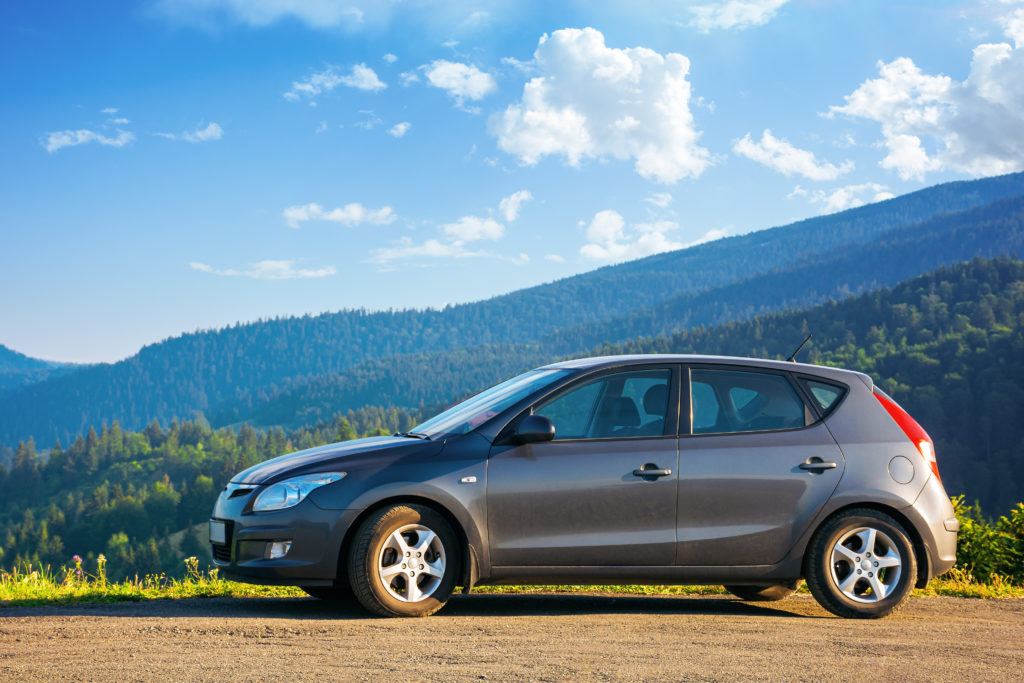This post may contain affiliate links, which means we’ll receive a commission if you purchase through our link, at no extra cost to you. Please read full disclosure here.
This post is your complete guide to buying your first compact car.

- 10 Steps To Buying Your First Compact Car
- 1. Determine Your Needs and Budget
- 2. Research and Compare Models
- 3. Take Test Drives
- 4. Consider Financing Options
- 5. Evaluate Total Cost of Ownership
- 6. Check for Incentives and Deals
- 7. Inspect the Car and Review the History (For Used Cars)
- 8. Negotiate the Price
- 9. Finalizing the Purchase
- 10. Prepare for After-Purchase Needs
- Conclusion
Compact cars are best known for their affordability, fuel efficiency, and ease of maneuverability, especially in urban settings.
Related: 13 Things To Consider When Buying A Car For Work
For single people and small families, compact cars offer a perfect balance between practicality and comfort.
However, if you’re new to the compact car club, you just might find the process a bit daunting.
Fear not, though.
Below is a step-by-step guide to help you navigate through the process of purchasing your first compact car.
Let’s begin!
10 Steps To Buying Your First Compact Car
1. Determine Your Needs and Budget
Before diving into the car buying process, it’s important to assess your needs and set a realistic budget.
Consider what you primarily need the car for — daily commuting weekend getaways, carrying passengers, etc.
Think about the features that are important to you, such as fuel efficiency, safety features, cargo space, and technological amenities.
Setting a budget is crucial and should include not only the purchase price but also other associated costs such as insurance, maintenance, fuel, and potential loan interest.
Always stick to your budget to avoid financial strain down the line.
2. Research and Compare Models
With your needs and budget in mind, start researching different compact car models.
Look for cars known for reliability, safety, and value for money.
Use online resources, consumer reports, and car review websites to gather information.
Compare different models based on their features, performance, safety ratings, fuel efficiency, and cost of ownership.
Make a list of models that fit your criteria.
3. Take Test Drives
Once you have a shortlist of models, visit dealerships to take test drives.
Test driving is crucial in determining how comfortable you feel in the car. Pay attention to visibility, seat comfort, steering, braking, acceleration, noise levels, and the overall driving experience.
Try different models back-to-back to make effective comparisons. Don’t be afraid to take notes on your phone or a notepad and the things you loved and disliked about each car.
4. Consider Financing Options
If you’re planning to finance your car, explore different financing options and compare interest rates and terms.
Check if the dealership offers financing and compare their rates with those from banks or credit unions.
Understanding the total cost of the loan, including interest over time, is essential. Often, a larger down payment can lower your monthly payments and save you money in the long run.
5. Evaluate Total Cost of Ownership
Apart from the purchase price, consider the total cost of owning the car.
This includes insurance costs, fuel expenses, maintenance, and depreciation. Some cars may have a lower purchase price but higher maintenance costs, or they might depreciate more rapidly.
Use online tools to calculate the total cost of ownership for the models you’re considering.
6. Check for Incentives and Deals
Car dealerships often offer special deals or incentives, especially towards the end of a model year or during sales events.
Look out for cash-back offers, rebates, or special financing rates.
However, be sure to read the fine print and understand the terms of these deals.
7. Inspect the Car and Review the History (For Used Cars)
If you’re buying a used compact car, thoroughly inspect the car and review its history.
Check for any signs of wear and tear, and ensure all features and systems are functioning properly.
Ask for the vehicle history report to check for any past accidents or issues. It’s advisable to have a trusted mechanic inspect the car before purchase.
Related: Should Your First Car Be New Or Used? Here’s How To Know
8. Negotiate the Price
Whether buying new or used, there’s usually room to negotiate the price.
Use your research on the car’s value and any existing imperfections (for used cars) to negotiate with the seller.
Be prepared to walk away if the deal doesn’t meet your budget or expectations.
9. Finalizing the Purchase
Once you’ve settled on a price, it’s time to finalize the purchase.
This will involve signing a contract, so read it carefully before signing. Make sure you understand all the terms and conditions and ask questions if anything is unclear.
10. Prepare for After-Purchase Needs
After purchasing your car, there are a few after-purchase needs to consider.
These include registering the car, getting it insured, and possibly purchasing an extended warranty.
Also, consider services for roadside assistance and emergency situations. (If you live in Florida, Big League Towing might be perfect for you.)
Being prepared for these eventualities ensures that you can enjoy your new car with peace of mind.
Related: The 6 Hidden Costs Of Buying A Car
Conclusion
Purchasing your first compact car is a journey that requires careful consideration and research.
By determining your needs and budget, researching and comparing models, taking test drives, considering the total cost of ownership, and preparing for after-purchase needs, you can make an informed decision.
Remember, the best car for you is one that meets your needs, fits your budget, and makes you feel comfortable and secure on the road.
With the right approach, you can enjoy the journey of buying your first compact car and the freedom and convenience it brings.